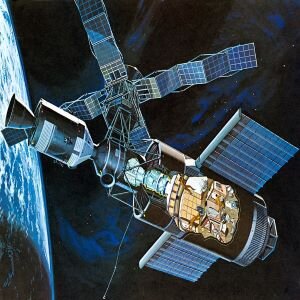
One of the largest challenges for interplanetary space travel is radiation protection. Inside of earth’s atmosphere, life is largely protected by earth’s magnetosphere. Outside of the low earth orbit, astronauts can encounter particles with energies from a few electron volts (eV) of several thousand MeV. This translates to approximately 80% of the speed of light for protons. Current shuttle shielding can protect from particles of up to 30 MeV. Additional shielding is not feasible with today’s technology as the weight and space required would prevent the ship from launching and the astronauts from doing meaningful research. Space radiation is composed of two main categories; Galactic Cosmic Radiation (GCR) and Solar Particle Events (SPE). Galactic cosmic radiation is unavoidable and unpredictable as it is composed of neutrons, protons, and other alpha particles coming from throughout the galaxy. Solar Particle Events are a Coronal mass ejection of protons by the sun with a fluence of approximately 1011 particles per cm2. Solar Particle Events occur on a cycle, with roughly seven occurring every year. This project’s aim is to use materials available aboard a spacecraft during a manned mission to Mars to create a temporary shelter to protect astronauts from Solar Particle Events (SPEs). This puts the astronauts at a higher risk of developing both Acute Radiation Syndrome and Chronic Radiation Syndrome as they will be in space for a duration of 3 to 5 years for the mission. We focused solely on the materials that the astronauts would have available onboard during their mission. These materials include water, food, clothing (in the form of cotton), tools, cargo transfer bags, and Styrofoam. The shelter would be made in the crew quarters, allowing for the astronauts to be comfortable during the SPE, which may last anywhere from an hour to multiple days. The spacecraft we used is modeled after the Skylab Shuttle.
